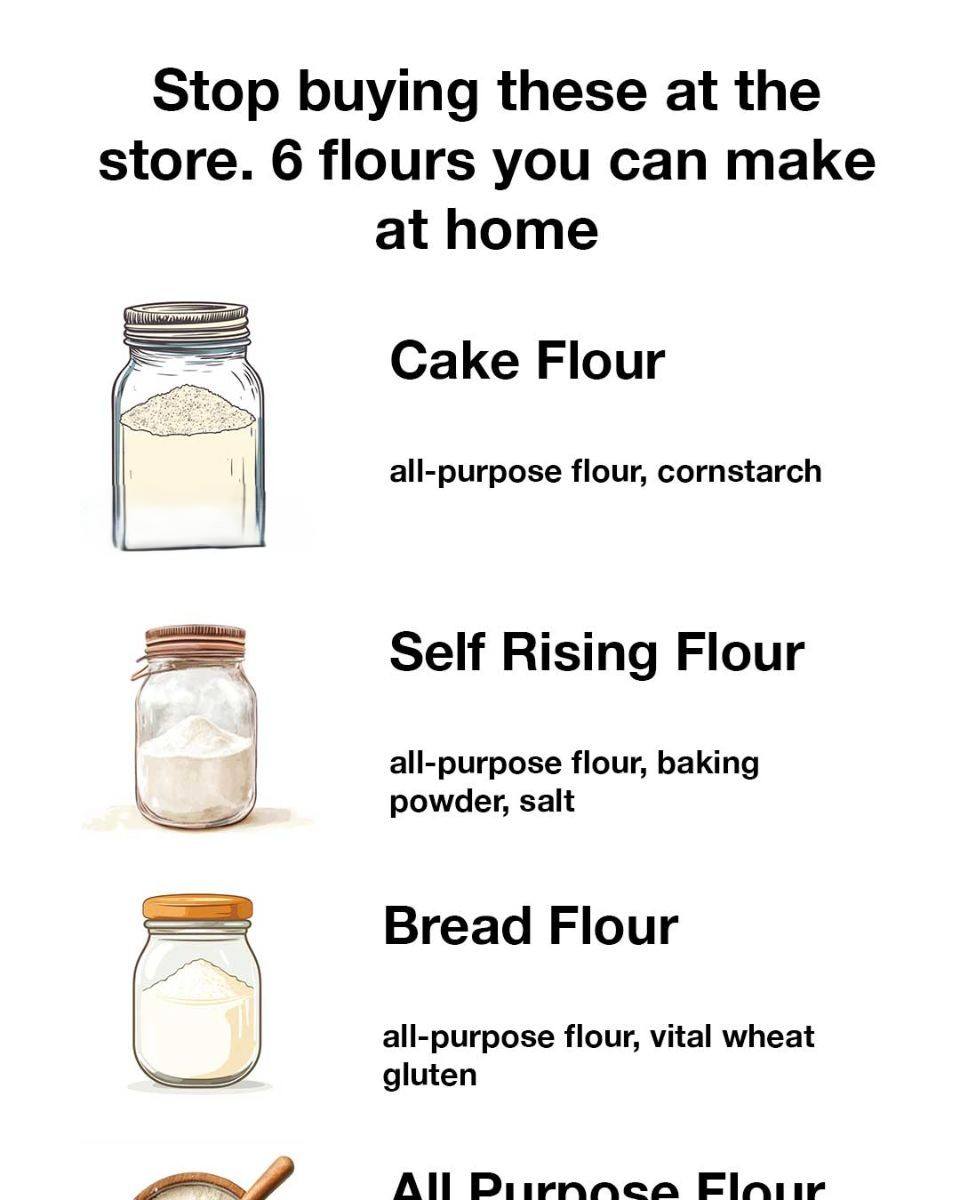ADVERTISEMENT
#### How to Use Rice Flour
Use rice flour to make gluten-free baked goods, such as cakes, cookies, and breads. It also works well as a thickening agent for soups and sauces.
—
### 5. **Chickpea Flour**
Chickpea flour, also known as **garbanzo bean flour**, is made from dried chickpeas and is a common ingredient in Mediterranean and Indian cooking. It’s rich in protein, fiber, and essential minerals, making it a healthy alternative to wheat flour.
#### How to Make Chickpea Flour at Home
Making chickpea flour requires **dried chickpeas**, which can be easily found at most grocery stores.
1. **Step 1: Rinse and Dry the Chickpeas**
Rinse the chickpeas under cool water and dry them completely.
2. **Step 2: Grind the Chickpeas**
Use a high-speed blender or food processor to grind the chickpeas into a fine powder.
3. **Step 3: Sift and Store**
Sift the flour to remove any larger pieces, and store it in an airtight container.
#### Benefits of Homemade Chickpea Flour
– **High in protein**: Chickpea flour is an excellent source of plant-based protein.
– **Gluten-free**: This flour is perfect for gluten-free recipes and is often used in gluten-free baking and cooking.
– **Versatile**: Chickpea flour can be used in both savory and sweet dishes.
#### How to Use Chickpea Flour
Chickpea flour is commonly used in recipes like falafel, pakoras, pancakes, and savory breads. It can also be used as a thickening agent for soups and stews.
—
### 6. **Oat Flour**
Oat flour is made from ground oats and is a popular choice in gluten-free baking. It’s naturally sweet and adds a mild, pleasant flavor to baked goods.
#### How to Make Oat Flour at Home
To make oat flour, simply use **rolled oats** or **instant oats**.
1. **Step 1: Blend the Oats**
Add the oats to a high-speed blender or food processor and blend until they reach a fine flour texture.
2. **Step 2: Sift and Store**
Sift the flour to remove any larger bits, and store it in an airtight container.
#### Benefits of Homemade Oat Flour
– **Gluten-free**: Oat flour is a great gluten-free option for those with sensitivities.
– **Rich in nutrients**: Oats are high in fiber, vitamins, and minerals, making oat flour a nutritious choice.
– **Easy to make**: Making oat flour is quick and simple, requiring only oats and a blender.
#### How to Use Oat Flour
Oat flour is perfect for baking cookies, muffins, and pancakes. It’s also great for adding to smoothies for a nutrient boost.
—
### Conclusion
Making flour at home is not only a cost-effective and healthy choice, but it also allows you to customize your flour to suit your dietary needs. From all-purpose flour to specialty flours like almond, coconut, and chickpea, these homemade alternatives can bring fresh, wholesome ingredients into your kitchen. Plus, with the ability to control the milling process, you’ll ensure that your flours are free from additives and preservatives commonly found in store-bought versions. Whether you’re trying to reduce your carb intake, avoid gluten, or just want to experiment with new flavors, there’s a flour option that’s perfect for every home cook. So, skip the store-bought versions and start making your own today!
